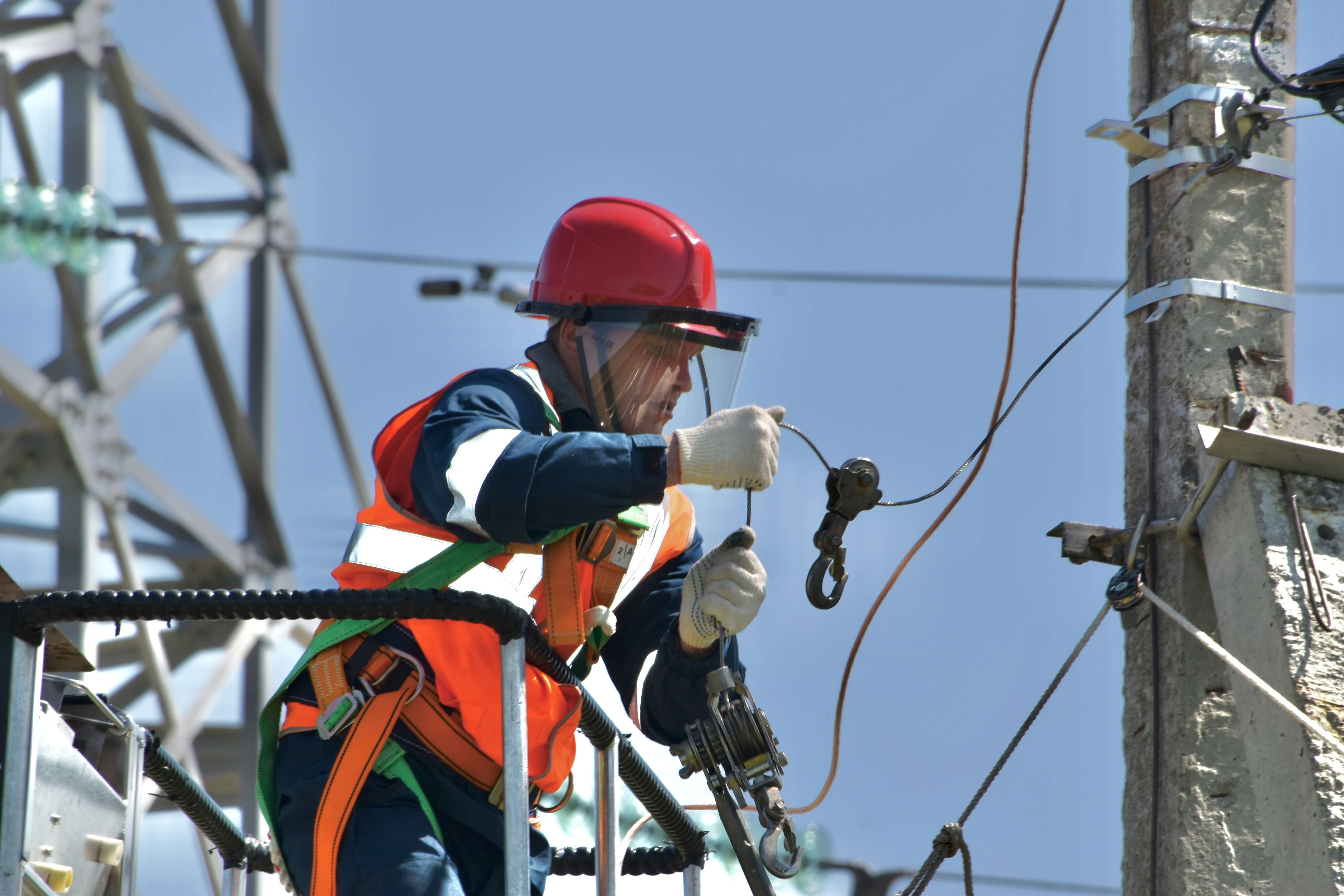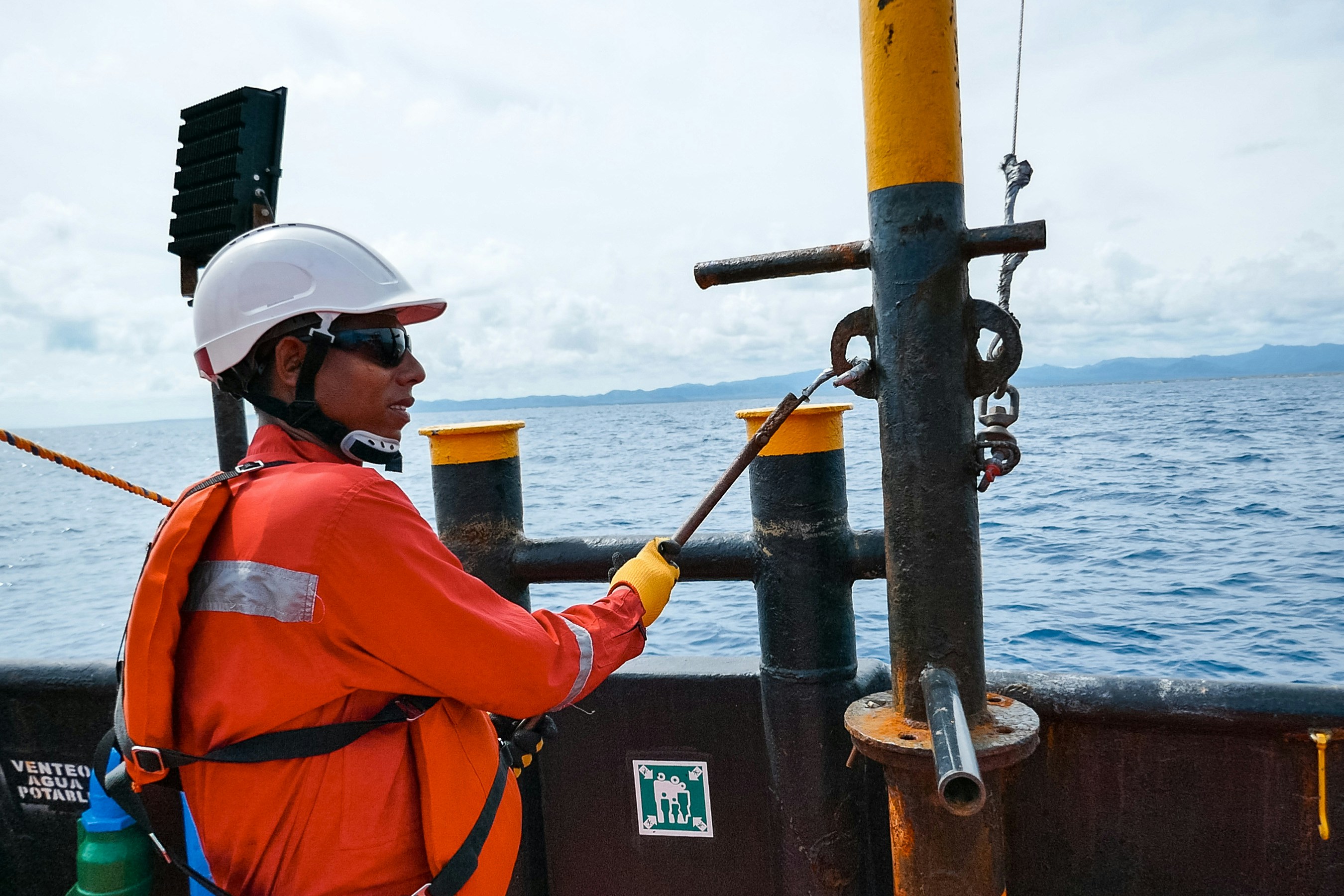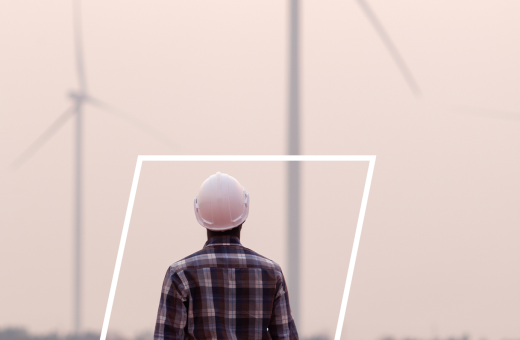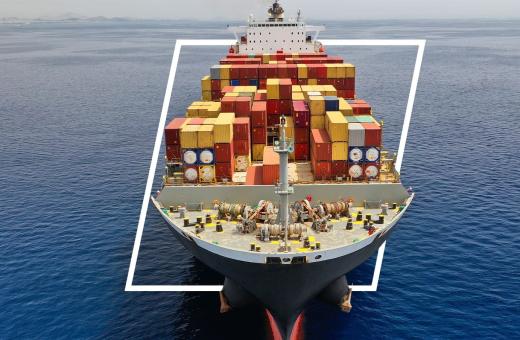
Renewables Innovation and The Role of Cable Engineers
10 Apr, 202510 minutes
The global shift toward clean energy is undeniable. Without advanced cables connecting offshore wind farms, solar panels, and tidal systems to the grid, renewable energy wouldn’t be able to reach the people and businesses that need it. These cables are essential in the energy transition, and innovation in this space is powering growth and driving new career opportunities for engineers across the world.
From undersea installations to remote onshore projects, cable systems are enabling some of the most ambitious renewable developments of our time. Here's how they’re helping to power progress and how skilled engineers are stepping into essential roles in the process.
How Cables Power Renewable Growth
As the world moves away from fossil fuels, one of the biggest questions is how to reliably deliver clean energy to where it’s needed. This is where cable technology plays a vital role. Whether a renewable project is located out at sea, in a desert, or along a tidal channel, it needs a strong connection to the grid. Cables provide that connection.
Every renewable energy system depends on power cables to link individual components together and to carry electricity across long distances. It’s this infrastructure that allows wind, solar, and tidal energy to move from generation points to homes, cities, and industries.
Innovation Built to Support Scale
Cable systems must change to carry more energy over greater distances and in more complicated environments as the amount of renewable generation rises. This has led to advancements in the design, testing, and installation of cables.
Here's a summary of the key innovations transforming cable systems for renewable energy:
- HVDC Systems for Long-Distance Transmission: High-voltage direct current (HVDC) systems are revolutionising long-distance power transmission, particularly for offshore wind farms. They minimise energy loss over vast distances and enhance grid stability.
- Next-Gen Insulation Materials: New, advanced insulation materials are improving cable performance by enhancing thermal resistance, reducing energy losses, and ensuring cables stay safe and efficient even in extreme temperature conditions.
- Flexible Cable Connections: Cables are becoming more versatile thanks to flexible connections, which allow for easier handling and installation in challenging and remote environments, such as deep-sea or off-grid locations.
- Prefabricated Joints for Faster Installation: Prefabricated joints speed up the cable installation process by providing pre-assembled components, cutting down both time and complexity during deployment, especially in hard-to-reach locations.
- Real-Time Monitoring and Fault Detection: With integrated monitoring systems, engineers can track cable performance in real-time. These systems catch faults early, preventing major issues and minimizing downtime, ultimately saving both time and costs.
- Hybrid Cable Systems: Combining power and data transmission into one cable, hybrid systems are making renewable energy projects, especially in offshore wind and tidal energy, more efficient by streamlining data and energy transmission in one go.
- Durable, Corrosion-Resistant Cables: Cables are now made with materials designed to withstand harsh marine conditions, such as saltwater corrosion and constant movement, reducing the frequency of maintenance and extending the lifespan of cables in offshore environments.
Industries That Rely on Cable Systems
In the fields of offshore wind, solar, and tidal energy, cable systems are crucial for power transmission. The need for qualified engineers with experience in cable installation, maintenance, and project management is only increasing as these industries grow.
Offshore Wind
Cable systems are a vital component of the infrastructure in the offshore wind sector. High-voltage export cables carry power from offshore substations back to land for offshore wind farms to depend on. Often running along the seabed, these cables need meticulous trenching and protection to guarantee they can survive severe marine conditions. Inter-array cables also connect separate turbines inside a wind farm, forming a network that enables the turbines to operate harmoniously.
The need for experienced engineers in offshore wind jobs, subsea cable engineers, and wind farm technician jobs is increasing as the demand for offshore wind energy rises, with opportunities in installation, maintenance, and project management.
Onshore Wind
The cabling systems for onshore wind projects function similarly, although the varied terrain presents special difficulties. Electricity is transported from wind turbines to nearby grid points via medium- to high-voltage cables. To minimise their negative impact on the environment, onshore wind systems frequently use subterranean cable routing to protect the surrounding environment.
Additionally, the cables must withstand power generation variations and thermal loads. To supervise the planning, building, and upkeep of these networks, onshore wind jobs for cable engineers and project managers are in great demand as the industry grows.
Solar
Cabling is essential to solar energy because it connects thousands of photovoltaic panels in massive solar farms. Direct current (DC) is transformed into alternating current (AC) and integrated into the grid by the cables that transport electricity from the panels to inverters and transformers. The need for well-designed cable systems that minimise energy loss is crucial as solar energy continues to gain popularity.
The entire system must operate effectively and frequently over long distances across level, open fields, or intricate urban landscapes. This is the responsibility of engineers working on solar projects, such as cable design engineers and senior cable project engineers.
Tidal
Although it is still in its early stages, tidal energy is largely dependent on subsea cables that are made to survive the harsh conditions and continuously flowing water of marine environments. The energy is sent to the grid via these cables, which link the tidal platform turbines to coastal substations.
To avoid wear from constant movement and exposure to saltwater, the cables must be specially made with long-lasting armoring and waterproofing. Engineers have more opportunities to work in the tidal sector as it expands, especially in the installation and maintenance of subsea cables.
Roles for Renewable Engineers in Cable Technology
With wind, solar, and tidal energy projects leading the world's shift to sustainable power, the renewable energy industry is expanding quickly. Cable technology, which guarantees the effective transmission of energy produced from renewable sources to the grid, is at the heart of these advancements.
Cable system engineers are essential to the accomplishment of these projects. As the industry grows, there is an increasing need for qualified engineers for projects like onshore solar arrays and offshore wind farms.
According to research, the offshore wind sector is expected to generate over 100,000 offshore wind jobs by 2030, with a substantial number of those positions needing cable engineering expertise.
Below are some of the key cable engineeer jobs across several sectors:
1. Offshore Wind Projects
One of the biggest and most promising growth sectors in the renewable energy sector is offshore wind farms. Cable systems play a critical role in these projects. From 2019 to 2029, it is projected that 5,000 km of array cables and 4,000 km of export cables will be installed to support offshore wind farms.
Inter-array cables link individual turbines within the farm, while subsea export cables carry electricity from offshore turbines to power plants on land.
Here are some of the crucial offshore wind jobs around cable technology that drive innovation in this sector:
Offshore Cable Engineers
Offshore cable engineers are responsible for overseeing the entire cable installation process in offshore wind farms.
Their tasks include:
- Cable Route Assessments and Surveys: Conducting detailed surveys to determine the best routes for cable installation.
- Installation Planning: Working with marine teams and logistics specialists to plan cable laying sequences, ensuring the cables are installed safely and efficiently.
- Export and Inter-array Cable Systems: Managing the connection of offshore turbines to the onshore grid by overseeing the installation and maintenance of subsea cables.
- Regulatory and Safety Compliance: Ensuring all installations comply with local and international safety standards and regulations.
Subsea Cable Engineers
Subsea cable engineers work alongside offshore cable engineers, with a focus on the installation and maintenance of subsea cables.
Their responsibilities include:
- Cable Laying and Protection: Overseeing the trenching, laying, and protection of subsea cables on the seabed.
- Fault Detection and Testing: Using advanced technology to monitor cable integrity and diagnose any potential issues.
- Performance Monitoring: Using sensors and digital tools to track the performance of subsea cables and ensure they operate within optimal parameters.
- Analyse marine environmental factors affecting cable performance, such as seabed composition, ocean currents, temperature variations, and biological activity.
What are The Key Differences Between These Offshore Wind Jobs?
The skill sets for both offshore cable engineers and subsea cable engineers overlap in areas such as offshore certifications, knowledge of marine environments, and experience with subsea cable installation. However, specialisation is needed when it comes to the unique challenges each role faces. Offshore engineers focus on logistics and installation planning, while subsea engineers concentrate on cable protection and monitoring in harsh underwater conditions.
2. Onshore Wind and Solar Energy
Onshore wind and solar energy projects also rely heavily on cable systems to connect renewable power sources to the grid. While the environments for these projects differ from offshore ones, the core engineering skills required are fairly similar.
Senior Cable Project Engineers
Senior Cable Project Engineers in onshore wind and solar projects play a vital role in ensuring the entire cable system is designed, installed, and maintained properly.
Their tasks include:
- Project Oversight: Managing the full lifecycle of the cable system, from design to delivery.
- Installation Supervision: Overseeing the work of installation crews and subcontractors, ensuring projects stay on schedule and within budget.
- Grid Connection and Compliance: Ensuring that cables are properly connected to the grid and comply with local regulations and standards.
- Stakeholder Communication: Acting as the primary point of contact between different project stakeholders, ensuring all parties are aligned and informed.
Cable Design Engineers
Cable Design Engineers focus on the technical aspects of the cable system, including:
- System Design: Creating detailed cable designs and 3D layouts that specify cable routes, types, and configurations.
- Load Flow and Ratings Calculation: Analyzing electrical loads, fault currents, and thermal ratings to select the appropriate cable materials and ensure optimal power transmission.
- Material Selection and Protection: Recommending suitable materials and protective measures to minimise wear and ensure longevity.
What are The Key Differences Between These Onshore Wind Jobs?
The primary difference between these onshore wind jobs in solar and wind projects lies in the systems they work with. Solar energy systems rely on cables that handle direct current (DC) from photovoltaic panels before converting it to alternating current (AC) for grid transmission. In contrast, wind power systems typically involve high-voltage AC cables designed to carry power generated by wind turbines to the grid.
3. Tidal Energy
Even though tidal energy is still relatively new in comparison to solar and wind, it offers special prospects for cable system engineers. Effective tidal energy harvesting depends on subsea cable technology, which enables the transmission of electricity produced by underwater turbines to the coast.
The marine environment presents a number of difficulties for engineers working on tidal energy projects, including corrosion, protecting underwater cables, and ensuring energy efficiency in remote areas. In tidal energy projects, subsea cables need to be built to withstand the strains of continuous movement, high-pressure conditions, and exposure to saltwater.
Subsea cable engineers working in tidal energy projects often specialise in:
- Cable Durability and Protection: Designing and installing cables that can withstand harsh underwater conditions, including abrasion from tidal currents and corrosion from saltwater.
- Hybrid Cable Systems: Integrating power and data cables into a hybrid system that allows real-time performance monitoring and power transmission.
- Performance Monitoring: Using sensors to track cable health and performance, ensuring efficient energy transmission and reducing maintenance needs.
What are The Transferable Skills Across Renewable Sectors?
Though each renewable energy sector presents its own challenges and specialised knowledge, cable engineers' skills in these fields are often transferable.
Here are some transferable skills across these fields:
- Electrical system design and analysis
- Knowledge of insulation, shielding, and cable protection methods
- Proficiency in interpreting electrical schematics and technical drawings
- Familiarity with grid connection standards and regulations
- Experience with cable installation, termination, and testing procedures
- Understanding of grounding and bonding principles
- Troubleshooting and fault detection skills
- Knowledge of health, safety, and environmental (HSE) standards
- Project management and coordination with multidisciplinary teams
- Use of specialised software for electrical and cable system modeling

How a Renewable Energy Recruitment Agency Can Help
Here’s how a renewable energy recruitment agency like us can provide specialised services tailored to you, ensuring that the right talent is matched with the right projects.
Here’s how we can support you:
- Global Talent Placement: We connect professionals with permanent and contract opportunities across the UK, Europe, APAC, and MENA, specialising in offshore wind, solar, and tidal energy sectors.
- End-to-End Renewable Energy Recruitment: From initial search to contract negotiation, we manage the entire renewable energy recruitment process to ensure a smooth experience for both candidates and employers.
- Industry Expertise: Our renewable energy recruitment team understands the demands of renewable energy projects, including certifications and compliance requirements, ensuring we find the best-fit candidates for every role.
- Urgent Project Mobilisation: We respond quickly to urgent staffing needs, ensuring fast placement of qualified professionals to meet project deadlines and certification windows.
- Career Consultation & CV Guidance: We offer tailored advice to help candidates optimise their CVs and navigate career paths within the renewable energy sector.
- Flexible Solutions: Whether you need contract or permanent staff, we provide flexible renewable energy recruitment options to meet your project requirements.
- Ongoing Support: We follow up with both clients and candidates to ensure satisfaction and long-term success.
Wrapping Up Renewables Innovation in Cables
As the world shifts further toward renewable energy, cable systems are becoming a crucial part of the infrastructure that makes it all work. Whether connecting offshore wind farms, solar fields, or tidal platforms, cables ensure that clean energy reaches the people and places that need it most.
Innovation in cable technology is moving quickly, helping projects grow and adapt to more challenging environments. Advancements like HVDC systems, real-time monitoring, and corrosion-resistant materials are creating new opportunities for engineers to apply their skills across a range of sectors.
For both engineers and energy companies, this is an exciting time to get involved. With the right renewable energy recruitment agency, it's easier to match the right people with the right projects and contribute to a cleaner, more connected energy future.
Looking for a Renewable Recruitment Agency that Delivers?
Whether you're a business looking for experts in offshore wind projects or an individual seeking your next career opportunity, we’re here to help. With our deep industry knowledge and collaborative approach, we connect companies with the right people to tackle today’s challenges. Committed to transparency and long-term success, we focus on building strong, sustainable teams that will help shape the future of renewable energy.
Contact us today to discuss your needs.

